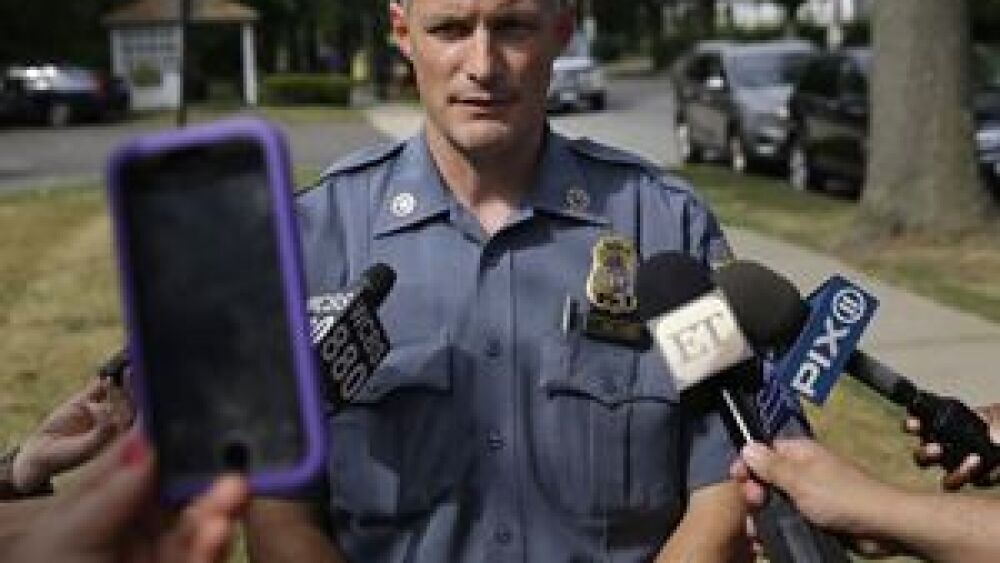Pulse of Policing 2015: The State of Law Enforcement is an ongoing research venture aimed at examining the current state of policing in America from the individual, organizational, and industrial perspectives. Below is one in a series of pieces which will address the challenges facing police leaders during times of diminishing budgetary support and increasing public scrutiny. Learn more about Pulse of Policing
In the digital age, information is disseminated at such a speed that by the time the truth comes out, an inaccuracy can already have spread halfway around the world. With the attention on law enforcement from both the media and the public at unprecedented levels, police departments need to face the reality that if they are not quick to provide information, those who seek it will find it elsewhere. The rise of social media and the camera phone has democratized reporting. The media machine is always hungry, and citizen journalism is becoming an increasingly popular method of feeding it. Do you want the first report on a critical incident or controversy involving your department to come from sources other than your own? Post-Ferguson, how an agency handles media relations is more important now than ever before.
Julie Parker, who spent 14 years as a journalist before joining the Prince George’s County (Md.) Police Department as their Media Relations Division Director, spoke at the 2015 Social Media, the Internet and Law Enforcement (SMILE) conference on how to build and manage a relationship with the media during incidents like an officer-involved shooting.
She began the session by telling the audience what cops “don’t like to hear” — that police officers and the press have more in common than one may think. They are both adrenaline-driven, pay attention to detail, have a desire to get the story right, and operate under a vast amount of pressure.
Parker emphasized that understanding and working together with the media yields far better results for an agency than actively resisting them.
“I’ve tried to take the reporting mentality and bring it into a police department…I’ve found it works very well,” Parker told the audience.
She then showed the crowd a series of pictures and asked the audience to call out what came to mind when they saw them. The pictures — single screenshots of the recent fatal shootings in North Charleston, Skid Row, and Tulsa that were captured on video — were instantly recognized by those in attendance. With the coverage they’ve garnered, how could they not be? This was exactly Parker’s point.
Media coverage of police incidents can often have an impact so powerful that they instantly elicit reaction — even by a single frame of a video. These stories and others like them begin on social media and spread like wildfire before being picked up by traditional news outlets. Given this, agencies cannot afford to lag behind on coverage when their department is suddenly in the spotlight.
Because social media is often where the story starts, police need to stay on top of the digital front.
“Getting out early and in front of your story is key,” Parker said. Every reporter these days uses mediums such as Twitter to gather information on a story — and it’s where cops also need to be.
Six Things to Decide Ahead of Time
Parker outlined six items her department decides ahead of time in order to stay on top of media coverage of incidents such as an officer-involved shooting:
- How, when and where will you announce?
Do you want to wait until you get to the scene to provide the media with information? More importantly, can you afford to wait? Are you comfortable enough with the information you have to offer it to outlets immediately? - Will you break the news or will the media?
Whatever the news is, good or bad, a department should strive to be the source. It is your mission to get there first. - Who will handle interviews?
Who will speak on the matter? The nature of the incident may dictate this. - How much detail will you provide?
Certain aspects have to come early, even if the thought makes you uncomfortable. - How close will you allow reporters to get to the scene?
One of Parker’s frustrations as a reporter was the amount of distance officials were keeping her away. Getting the media as close as possible without jeopardizing the scene helps build a positive relationship with them. - Who will monitor social media to check for inaccuracies?
Who is going to keep an eye on how your story is being told?
Painting the Picture with Your Words
When crafting releases for the media, the choice in language can ultimately affect how and what news organizations choose to report. Parker used an example of an officer-involved shooting in which one of the cops involved suffered minor injuries when the suspects attempted to flee in a vehicle. The officer was ultimately fine, but the department made sure to include the detail in their press release, writing: “The suspects were determined to flee and used their car as a weapon.”
As a result, the coverage of the incident underscored the danger the cops faced in the shooting — not just that the officers were forced to take two lives.
Getting Fair Coverage
Parker detailed a fatal incident involving a replica gun as another example of how working with the media can result in getting fair coverage.
Officers were called to the scene after receiving reports of a suspect armed with a long gun. Police shot and killed the suspect after he refused multiple orders to drop his weapon. After recovering the long gun and a pistol, it was discovered that both firearms were replica pellet guns.
The department wrote in their press release: “Pellet guns such as the ones recovered today in Suitland are often made to look as realistic as possible.”
An internal debate over whether or not to release pictures of the guns to the media followed. After discussing the possibility of the action creating a slippery slope, the agency ultimately chose to release the photos — the aim was to show the public what the officers were facing when the shooting occurred.
Parker also allowed the media to get as close to the scene as possible without jeopardizing it. This enabled the press to get shots of the replicas lying on the ground at the crime scene.
The result:
All of the choices the department made in terms of working with the media — timely updates, releasing the photos, allowing reporters to get close to the scene, and carefully choosing the language in their news releases — resulted in coverage that put emphasis on how easily the weapons could be confused for the real thing. As seen in the above video, the journalist mentioned the long gun looked realistic, the report featured a photo of the replica alongside a real weapon, and the “man on street” interviews sided with the cops over the pellet gun’s realism.
Parker stressed that the department didn’t tell the media what to run, but they better controlled the narrative by being as proactive and accommodating to reporters as they were able to be. Taking these steps doesn’t always guarantee fair coverage, but your department has a far better chance at receiving it if you work with — not against — those who are covering you.














